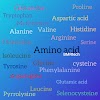Definition of Carbohydrates? ...Structure, Function and Uses...
CARBOHYDRATES
Definition of Carbohydrates:
Carbohydrates are the sugars, starches and fibers found in fruits, grains, vegetables and milk products. This is one of the basic food groups are important to a healthy diet.
OR
A carbohydrate is a biomolecule consisting of carbon (C), hydrogen (H) and oxygen (O) atoms, usually with a hydrogen–oxygen atom ratio of 2:1 (as in water) and thus with the empirical formula C(H2O)n.
The term is generally normal in natural chemistry, where it is an equivalent word of saccharide, a gathering that incorporates sugars, starch, and cellulose. The saccharides are separated into four synthetic gatherings: monosaccharides, disaccharides, oligosaccharides, and polysaccharides. Starches play out various functions in living creatures. Polysaccharides serve for the capacity of vitality (for example starch and glycogen) and as basic parts (for example cellulose in plants and chitin in arthropods). The 5-carbon monosaccharide ribose is a significant segment of coenzymes (for example ATP, FAD and NAD) and the foundation of the hereditary atom known as RNA. The related deoxyribose is a segment of DNA.
Carbohydrates are found in a wide array of both healthy and unhealthy foods—bread, beans, milk, popcorn, potatoes, cookies, spaghetti, soft drinks, corn, and cherry pie. They also come in a variety of forms. The most common and abundant forms are sugars, fibers, and starches.
- The healthiest sources of carbohydrates—unprocessed or minimally processed whole grains, vegetables, fruits and beans—promote good health by delivering vitamins, minerals, fiber, and a host of important phytonutrients.
- Unhealthier sources of carbohydrates include white bread, pastries, sodas, and other highly processed or refined foods. These items contain easily digested carbohydrates that may contribute to weight gain, interfere with weight loss, and promote diabetes and heart disease.
Saccharides and their derivatives include many other important biomolecules that play key roles in the immune system, fertilization, preventing pathogenesis, blood clotting, and development. Cellulose, a polysaccharide found in the cell walls of all plants, is one of the main components of insoluble dietary fiber. Although it is not digestible, insoluble dietary fiber helps to maintain a healthy digestive system by easing defecation. Other polysaccharides contained in dietary fiber include resistant starch and inulin, which feed some bacteria in the microbiota of the large intestine, and are metabolized by these bacteria to yield short-chain fatty acids.
STRUCTURE :-
 | |
|
Natural saccharides are generally built of simple
carbohydrates called monosaccharides with general formula (CH2O)n where n is
three or more. A typical monosaccharide has the structure
H–(CHOH)x(C=O)–(CHOH)y–H, that is, an aldehyde or ketone with many hydroxyl groups
added, usually one on each carbon atom that is not part of the aldehyde or
ketone functional group. Examples of monosaccharides are glucose, fructose, and
glyceraldehydes. However, some biological substances commonly called
"monosaccharides" do not conform to this formula (e.g. uronic acids
and deoxy-sugars such as fucose) and there are many chemicals that do conform
to this formula but are not considered to be monosaccharides (e.g. formaldehyde
CH2O and inositol (CH2O)6).
The open-chain form of a monosaccharide often coexists with a closed ring form where the aldehyde/ketone carbonyl group carbon (C=O) and hydroxyl group (–OH) react forming a hemiacetal with a new C–O–C bridge.
Two basic compounds make up carbohydrates:
Ketones: These are double-bonded carbon and oxygen atoms, plus two additional carbon atoms. Carbs can combine together to form polymers, or chains.
These polymers can function as:
- long-term food storage molecules
- protective membranes for organisms and cells
- the main structural support for plants
- Most organic matter on earth is made up of carbohydrates.
- They are involved in many aspects of life.
USES :-
Carbohydrates give fuel to the focal sensory system and vitality for working muscles.
They likewise keep protein from being utilized as a vitality source and empower fat digestion, as per Iowa State University.
Likewise, "sugars are significant for mind work," Smathers said.
SUBSCRIBE FOR MORE INFORMATION.......!






0 Comments